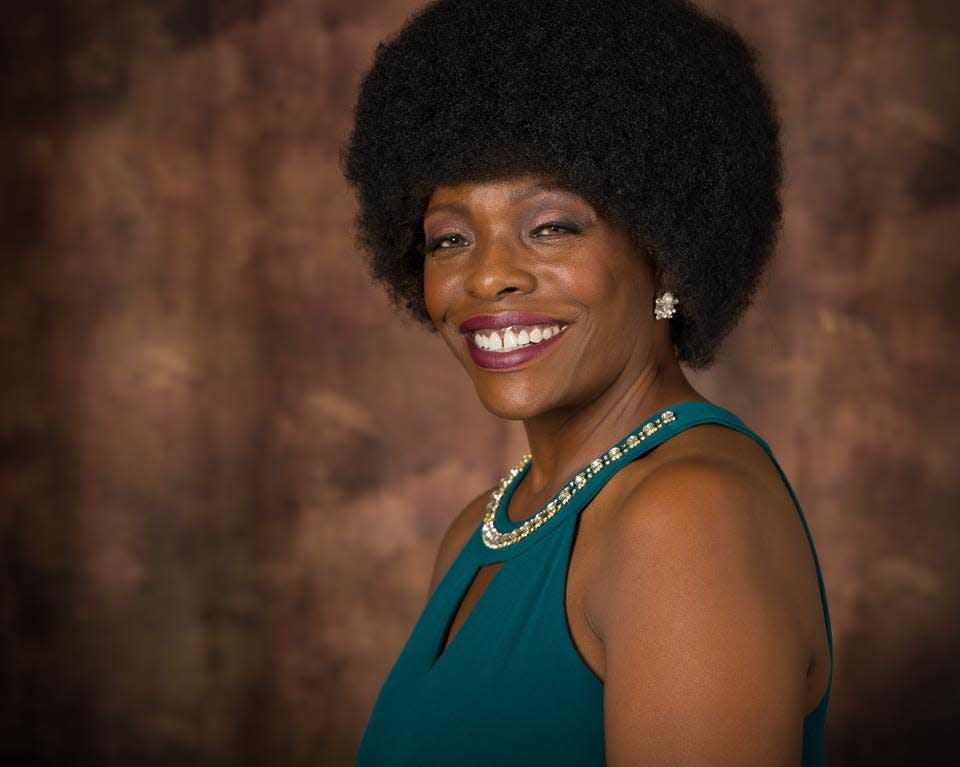Op/Ed: Black history is Hoosier history; help fill the gaps in Indiana's past and present
- Oops!Something went wrong.Please try again later.
Imagine reading a book with chapters torn out. Or watching a movie that’s missing scenes. Or trying to describe a family when you’ve not met all of its members.
That’s what it’s like trying to understand Indiana’s history without knowing key stories.
Like the story of Mary Bateman Clark.
Mary was a slave who was brought to Indiana from Kentucky in 1814 and given her freedom … sort of. Although no longer a slave, she was immediately forced into indentured servitude, first with Benjamin J. Harrison, then with Gen. Washington Johnston, one of the most influential men in the state.
A practice common in America throughout the 18th century, indentured servitude was a contractual agreement in which one person worked for another for no pay to resolve a debt, such as the cost of passage to the states, or to learn a trade.
The difference between that model and Mary’s servitude is that hers was not voluntary. In a practice that allowed whites to get around rules prohibiting slavery, Blacks often were forced to sign indenture contracts they could not read, binding them to decades of work without pay. Refusing to sign likely meant being returned to slavery in the South.
Fortunately, abolitionist attorney Amory Kinney was willing to fight Mary’s indenture. While the suit he filed, Mary Clark, a woman of color v. General W. Johnston, lost in the Knox County Circuit Court, Kinney successfully appealed the decision before the Indiana Supreme Court in 1821, creating a precedent that others were able to use to effectively put an end to indentured servitude in Indiana.
As a result of Mary’s contributions, a historical marker now stands in her honor at the Knox County Courthouse in Vincennes, a fitting acknowledgment of a remarkable story that’s even more remarkable to me because, as I discovered several years ago, Mary was my great-great-great-grandmother. But her story isn’t just a part of my family’s story; it’s a part of Indiana’s story, a story that is not complete without her. In 2020, I published the book “Black in Indiana” to fill in that gap.
I am aware that, by knowing Mary Bateman Clark’s story and its connection to my family, I’m an exception among Black Hoosiers. Many don’t know their roots and, if they do, the history doesn’t go much beyond their grandparents. I have become increasingly aware of this challenge since I joined Indiana Landmarks last year to lead the organization’s Black Heritage Preservation Program. As we seek to save and celebrate places significant to the state’s Black history, we first need to identify the history.
Boyd:Former journalist’s new role focuses on preserving Indiana’s Black heritage
To do that, we need help. That’s why I’m asking you to contact us if you know about stories or places that could help fill those gaps. You don’t have to be a researcher or a writer; just contact us at shareyourstory@indianalandmarks.org to share your story.
Another option is to participate in a free research training workshop 9 a.m. to 3 p.m. Tuesday hosted by Indiana Landmarks, Indiana Humanities and Freetown Village. Though the in-person workshop is sold out, online registration is still welcome. The workshop includes topics such as how to find information on Black heritage, applying for grants to support research and how to use qualified research to apply for such things as inclusion in the National Register of Historic Places and local preservation protections. It also will feature a performance by Freetown Village actors showing how Black history can be brought to life.
Register by calling 317-616-9798 or at https://bit.ly/BHPPResearchTraining23.

Indiana’s history is not complete without the story of Black Indiana, and that story starts with Black families. After all, as I discovered, digging deeper into the stories of your family might allow you to uncover a history maker like Mary Bateman Clark. And, even if you don’t, it will allow you to fill in missing chapters of the story of Indiana.
Eunice Trotter is director of Indiana Landmarks’ Black Heritage Preservation Program.
This article originally appeared on Indianapolis Star: Indiana's history is incomplete without history of Black Hoosiers

